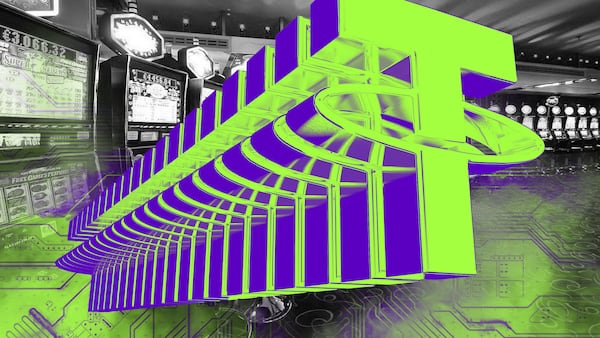- A lot of criminal activity happens offchain, experts say.
- Blockchain analytics can miss this activity.
- Mixers and bridging techniques can also obscure how much crime is captured.
The extent to which crypto is used to finance bad actors like drug dealers and militant organisations is worse than analysts estimate, Congress was told on Thursday.
The role of crypto in illicit financing is currently a topic of bitter debate among lawmakers.
The crypto industry likes to cite research showing that money laundering accounts for a tiny fraction of crypto transaction volume — 0.62% in 2022, according to Chainalysis.
But these figures underestimate the extent of crypto’s role in illicit finance, Carole House told Congress on Thursday, because they don’t account for offchain activity.
Blockchain analytics firms are “seeing the information they have access to, and that’s available onchain. They’re not seeing offchain activity. They don’t know what law enforcement and agencies know,” House said.
House is a nonresident senior fellow at the Atlantic Council GeoEconomics Centre, and a resident executive at venture capital firm Terranet Ventures.
She was among the expert witnesses who testified at a hearing in a digital assets subcommittee in the House of Representatives, held to discuss how policy can improve tools used to fight crypto crime.
House said analytics companies — which can track illicit financing on the blockchain — perform a critical service, and law enforcement and regulators rightly rely on them.
Nevertheless, she said, their tracing doesn’t capture a broad spectrum of illicit activity in offchain transactions.
That runs counter to a favourite narrative of the crypto industry — that the transparency of the blockchain is a robust defence against illicit activity, and the problem is greater by orders of magnitude in the opaque mainstream financial system.
For example, Coinbase’s director of financial crimes legal Grant Rabenn told Representative Ritchie Torres during the hearing that United Nations say that money-laundering accounts for a staggering 5% of global gross domestic product — up to $2 trillion a year.
Others, including House, say blockchain transparency has limits.
One limit for blockchain tracing is that much illicit activity happens at exchanges, which internally match the customer orders but don’t report that volume on the blockchain.
The National Bureau of Economic Research estimates that when it comes to Bitcoin, this offchain transaction volume is at least 10 times greater than onchain transaction volume.
Another limit to blockchain transparency is the obfuscation provided by crypto mixers.
Crypto mixers like Tornado Cash enable users to blend their assets with others before they are transferred to their intended recipient, obfuscating the trail for those who wish to track transactions.
Tumblers have become a popular method for cybercriminals to hide their tracks after a heist.
‘Bad criminals are dumb’
Representative Sean Casten said during the hearing he was concerned that criminals use mixers and chain-bridging techniques to hide their tracks.
“Bad criminals are dumb. The ones who get away with it are smart, and they’re not going to do the crime where it’s easy to track the crime,” he said.
Casten’s comments reflected broad concerns in the government that lawbreakers are using mixers.
In October, the Treasury’s Financial Crimes Enforcement Network designated mixing as a prime money laundering concern and “acute” national security threat.
FinCEN proposed rules that would essentially compel banks to report suspicious transactions in their mixer customers.
The government has also levied enforcement actions against popular mixers like Tornado Cash, which was accused of facilitating transactions by the North Korea-affiliated Lazarus Group hackers and others.
But data shows that as authorities get wise to mixers, criminals are turning to cross-chain bridges.
“We are playing this Whac-a-Mole game … we’re moving into these chain-hopping techniques,” Casten said.
‘We are playing this Whac-a-Mole game … we’re moving into these chain-hopping techniques.’
But Ari Redbord, head of legal and government affairs at blockchain intelligence company TRM Labs, said firms like his can in fact trace this activity.
TRM traces “the flow of funds across 29 different blockchains and about 70 million different assets today,” Redbord said.
“So we’re following the flow of funds across different blockchains, cross-chain swaps, across bridges.”
That hinders bad actors like North Korean hackers from finding offramps to realise their ill-gotten gains, he added.
Lazarus stole over $293 million in crypto in 2023.
Heated debate
The hearing was the culmination of months of heated debate about the role cryptocurrencies play in the funding of terrorism and financial crimes — particularly in the wake of Hamas’ October 7 attack on Gaza.
The Wall Street Journal reported on October 10 that a Hamas affiliate had raised $93 million in crypto financing in the past few years, citing data from analytics firms Elliptic.
Anti-crypto firebrand Senator Elizabeth Warren rallied some 100 congresspeople to pen an open letter, leveraging the Journal article, and calling upon the Biden administration to clamp down on “crypto-financed terrorism.”
After a backlash from the crypto industry, Elliptic said the Journal had misinterpreted its data.
During a separate hearing in the House Financial Services Committee on Wednesday, Brian Nelson, undersecretary of Treasury’s Office of Terrorism and Financial Intelligence, conceded that crypto’s role in terror financing is limited.
“Terrorists still prefer, frankly, to use traditional products and services,” he said.
Joanna Wright is a regulation correspondent at DL News. Sebastian Sinclair, is a markets correspondent at DL News. Got a tip? Reach out to them at joanna@dlnews.com and sebastian@dlnews.com.
Correction, Feb 16: A previous version of this story misattributed Coinbase director of financial crimes legal Grant Rabenn’s quote about money laundering figures to Rep. Ritchie Torres. The story has been updated to correct the error.







